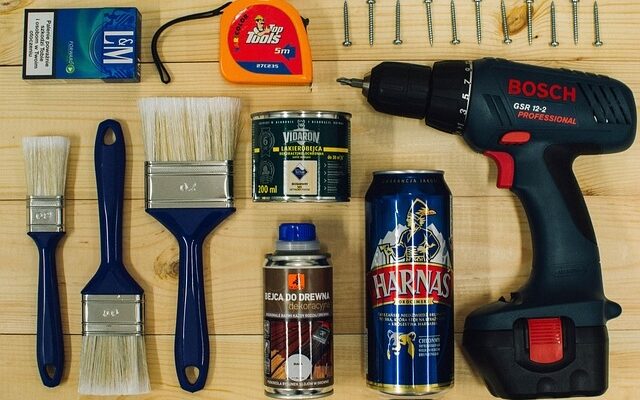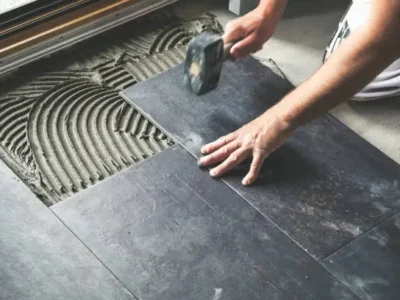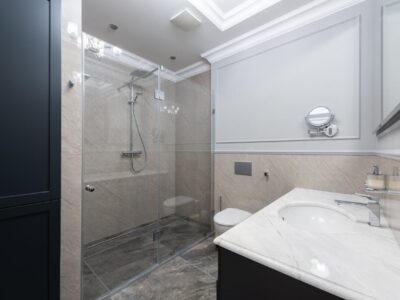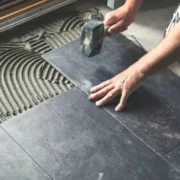As a professional painter or DIY enthusiast, you are always looking to improve your project. Would you like to learn more about why oil-based paint is used? This versatility literally allows some skills to go to the next level! Whether you’re working on new construction, remodels, repainting, or homeowner projects, it delivers great results in all of these applications. In this post, we’re going to look at what makes this paint so great and why it may be great for your next big professional job. Learn how this proven formula can improve durability, coverage, and overall touch-up quality. It’s time to enter the world of oil-based paint and discover its potential for your painting!
What is Oil-Based Paint and When Should You Use It?
An oil-based binder holds the colour together, making oil-based paint a strong and long-lasting finish. Professional artists and people who like to do their own projects both like this type of paint because it has many benefits for different uses. At Paintlabie, oil-based paints are crafted with quality ingredients, typically containing natural oils like linseed or synthetic alkyd resins. These components give the paint its distinctive properties, like:
- Longer drying time, allowing for smoother application
- High gloss and rich color depth
- Excellent coverage and hiding power
- Durability and resistance to wear and tear
Oil-based paints excel in certain scenarios:
- High-traffic areas: The robustness of oil-based paint helps kitchens, bathrooms, and hallways.
- Exterior surfaces: With oil-based coatings, metal fittings, doors, and wood cladding resist the elements better.
- Trim work: On baseboards and mouldings, the paint’s self-levelling characteristics produce a seamless finish.
The Advantages of Oil-Based Paint for Professional Projects
Their special qualities make them a great fit for several uses, especially in busy locations or on surfaces that call for more resilience.
Superior Durability and Longevity
It gives a strong, tough finish that resists wear and tear. This qualifies them as perfect for:
- Trim and moldings
- Doors and windows
- Kitchen and bathroom cabinets
- Exterior surfaces exposed to harsh weather
The tough, enamel-like coating resists chipping, scratching, and fading better than many water-based alternatives.
Smooth, Even Coverage
This painting medium is recognised in some part as the property of laying down when it dries, which creates a flat surface. This self-levelling property minimises roller stipple and brush marks to give your paint job a smooth and professional-looking finish. And it will do particular good on painting big, flat areas or whenever a glossy finish is desired.
Excellent Adhesion
Its have superior adhesion properties, allowing them to bond well to a variety of surfaces, including:
- Previously painted areas
- Bare wood
- Metal surfaces
- Chalky or weathered exteriors
This strong adhesion helps prevent peeling and flaking, extending the life of the paint job and reducing maintenance needs over time.
Preparing Surfaces for Oil-Based Paint Application
The surface should be meticulously cleaned and degreased before using oil-based paint. Cleaning: Dirt, dust, and gunk can be wiped clean with a mixture of warm water and mild detergent. If the grease stains are stubborn, you can use a degreasing agent. Rinse it off really well, and let it dry all the way. For the best paint adhesion, scuff-sand the surface with fine-grain sandpaper. This will give a nice, slightly rough (but not gritty) surface to help establish a bond between the paint and the laminate. Wipe off any dust with a tack rag or vacuum with a brush attachment after sanding. A high-quality primer is definitely necessary when using oils. Select a primer that was made specifically for oil use. This step helps:
- Seal porous surfaces
- Improve paint adhesion
- Enhance the paint’s durability
- Prevent stains from bleeding through
Following product directions, apply the primer uniformly with a brush, roller, or sprayer. Before entering the painting stage, let the primer dry totally.
Proper Techniques for Applying Oil-Based Paint
Preparation is Key
Before you get started on an oil-based paint job, you’ll need to make sure you’ve prepared your space. Begin by cleaning your surface well to get rid of any dirt, grit or oil. Sand down rough patches and patch any cracks and holes with putty. Prime the surface with a high-quality primer suitable for its type for optimal adhesion and coverage.
Application Methods
Apply this paint with long, smooth strokes using a foam roller made for oil-based products or a premium natural bristle brush. Work in little chunks, keeping a “wet edge” to minimise obvious lap marks. For more surface area, think about applying a professional, even finish with a paint sprayer.
Layering and Drying
Usually, the best effects require several thin coatings. Depending on humidity and temperature, let every layer dry totally before adding the next; this can take 24 to 48 hours. For an absolutely smooth finish, gently sand between applications.
Clean-Up and Safety
Remember that oil-based paints require specific solvents for removal. Using either mineral spirits or paint thinner, clean brushes and instruments. Always work in a well-ventilated area and use the appropriate protective gear, gloves and a respirator, including, to ensure safety while handling oil-based products.
Conclusion
Get ready to enjoy the great benefits of oil paint when you’re ready to start your next painting job. The high durability of its material, the decorative quality, impact strength, and the fact that it can withstand extreme temperatures and weather conditions, makes it ideal for high-traffic areas and external applications. Opt for this paint from PaintLab. i.e., you’re buying quality results that will last. Our wide-ranging selection and convenient calculator make it easy to find the perfect product for your needs. Rely on primer oil-based paint that won’t let you down in your professional commercial and residential jobs.




















